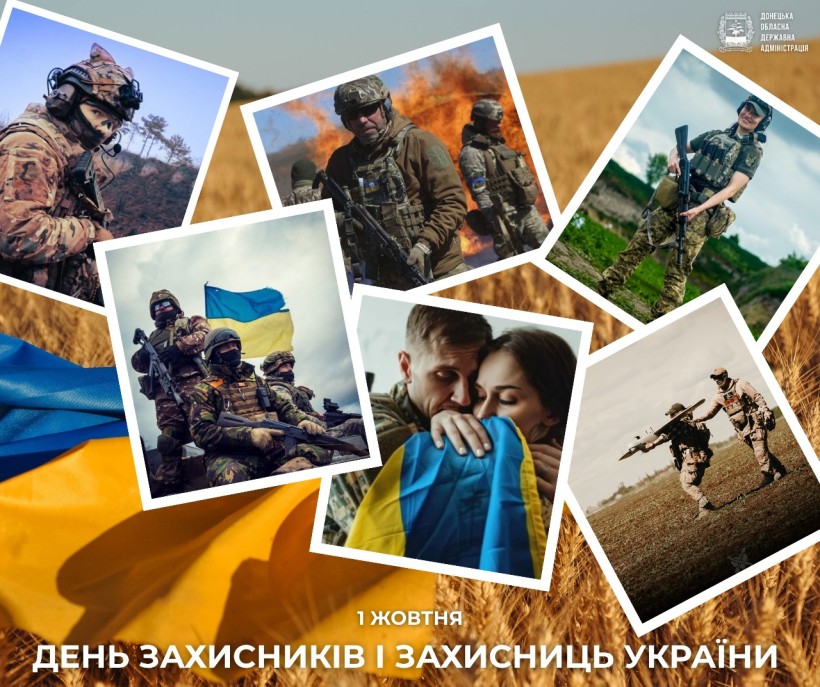
On October 1, Ukrainians celebrate the Intercession of the Holy Virgin, the Day of the Ukrainian Cossacks, the Day of the Ukrainian Insurgent Army, and the Day of Defenders of Ukraine.
The idea of the intercession of the Mother of God, the protector of Ukraine from enemies, has deep roots in the times of Rus and is associated with the campaigns of the Rus in the ninth century. Prince Yaroslav the Wise built a church on the Golden Gate in Kyiv as an expression of gratitude to God and the Blessed Virgin Mary.
The Feast of the Intercession of the Blessed Virgin Mary is especially honored in Ukraine. The Cossacks gave it a second name, Cossack Intercession. On this day, the Zaporozhian Sich held councils to elect atamans and officers. At the same time, the Cossack Intercession icons appeared, depicting Ukrainian hierarchs, hetmans, and Cossacks under the omophorion of the Virgin Mary.
During the Ukrainian Revolution of 1917-1921, the traditions of the military Cossack community were revived. They became the basis for the development of the armed forces of the UPR, the Ukrainian State, and the ZUNR. First of all, this can be seen in the names of military formations. The first such unit was the Ukrainian Cossack Regiment named after Bohdan Khmelnytsky, created in May 1917. Subsequently, formations named after other prominent Cossack commanders emerged, such as Petro Doroshenko, Maksym Zalizniak, Kostia Hordiienko, and Ivan Mazepa. The Cossack "imprint" is also in these names: Sich Riflemen, Zaporizhzhia Group, Serdyutska Division, Haidamak Regiments, and Free Cossacks.
Cossack military traditions during the Ukrainian Revolution can also be traced in military symbols (banners, insignia), names of military equipment (Khortytsia, Zaporozhets, Polubotok, and other armored trains), and names of ships (Hetman Ivan Mazepa cruiser, Zaporozhets gunboat). We should also mention the military terminology for ranks, positions, and military structural elements: Cossack, swarming, chotar, bunch, half-cossack, centurion, kurin, horseman, colonel, brigade ataman, division ataman, corps ataman. This was reflected in the uniforms and appearance of the soldiers of the Ukrainian military formations of those times. The "mazepinka" cap, black hats with colored stitches, Circassian shoes, and other elements of old Ukrainian military clothing. The soldiers often shaved their heads like the Cossacks, leaving only a herring.
In World War II, Ukrainians fought against Nazism in the ranks of the Red and Ukrainian Insurgent Armies and other armies of the United Nations.
The soldiers of the Ukrainian Insurgent Army took up arms to defend Ukrainians from both totalitarian regimes, the Nazi and Communist ones. They fought to restore Ukrainian statehood and followed the Cossack military traditions. The day of its creation-October 14, 1942, which was the Intercession of the Blessed Virgin Mary-is also symbolic. The UPA's struggle was a continuation of the Ukrainian liberation movement of the Ukrainian Revolution of 1917-1921, the underground Ukrainian Military Organization and the Organization of Ukrainian Nationalists in the 1920s and 1930s.
Today, our army has become one of the most capable armies in the world, with 11 years of combat experience. Already during the current War for Independence, the Armed Forces were reformed and modernized to the latest standards, and the Ukrainian military traditions were restored. Since 2015, names and symbols of military units that preserve our national military traditions have been introduced. For example, the 72nd Brigade was the first to receive the honorary name of the Black Cossacks, the 93rd Brigade was named Kholodnyi Yar, the 30th Brigade was named after Prince Kostiantyn Ostrozkyi, the 28th Brigade became the Knights of the Winter Campaign Brigade, etc.
We thank all those who defend our independence and remember each and every one of those who gave their lives for Ukraine. Our gratitude to the Security and Defense Forces of Ukraine is not something abstract and impersonal, because each of us has relatives, friends and colleagues who are defending the country and freedom.
The simplest way to express our gratitude is to support combat units with donations.